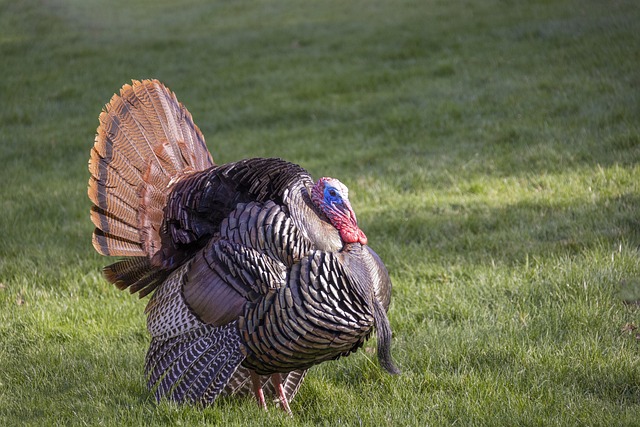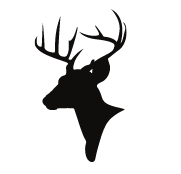Wild Turkey Mating Season: Timing and Characteristics

Wild turkeys are fascinating creatures that are native to North America. They are known for their distinctive appearance, with their colorful feathers and impressive size. However, what many people may not know is that wild turkeys also have a unique mating season.
The wild turkey mating season typically occurs in the spring, usually starting in late March or early April and lasting through May.
During this time, male turkeys become more vocal and active as they try to attract a mate. They will puff out their feathers, fan their tails, and strut around to show off their impressive size and appearance.
It’s important to note that the exact timing of the wild turkey mating season can vary depending on a number of factors, including location, weather conditions, and population density.
However, by understanding the general patterns and behaviors of these fascinating birds, wildlife enthusiasts can gain a greater appreciation for the natural world around them.
What is Wild Turkey Mating Season?
When Does Wild Turkey Mating Season Occur?
Wild turkey mating season, also known as the breeding season, occurs in the early spring months of February to May. During this time, male turkeys, also called toms or gobblers, become more active and vocal in their attempts to attract hens for breeding.
Why is Wild Turkey Mating Season Important?
The wild turkey mating season is an important time for the species as it is the time when reproduction occurs. Hens will lay eggs and incubate them, while toms will continue to attract and mate with hens to ensure the survival of the species.
This time is also important for hunters as it is the prime time for turkey hunting.
What Happens During Wild Turkey Mating Season?
During wild turkey mating season, male turkeys will become more vocal and gobble to attract females. They will also strut and display their feathers to show off their attractiveness to the hens.
Hens will select a mate and lay their eggs in a nest on the ground or in a low tree branch. The male turkey will continue to attract and mate with hens throughout the season.
The mating season also affects the behavior of turkeys in flocks. Males will establish their pecking order and fight for dominance. The dominant male will have the best chances of attracting hens for breeding.
During the winter months, turkeys will roost together in large flocks, but during mating season, they will disperse and become more solitary.
In conclusion, wild turkey mating season is an important time for the species as it ensures their survival through reproduction. Toms become more active and vocal in their attempts to attract hens, while hens select a mate and lay their eggs.
The mating season also affects the behavior of turkeys in flocks, with males establishing their dominance and fighting for the best chances of breeding.
The Courtship of Wild Turkeys
What is Courtship in Wild Turkeys?
Wild turkey courtship is a fascinating process that takes place during the mating season. Courtship is the period when male turkeys try to attract female turkeys for mating. During this period, male turkeys display a range of behaviors, including strutting, gobbling, and puffing up their feathers.
How Do Wild Turkeys Attract Mates?
Male turkeys use a variety of methods to attract mates. One of the most common methods is strutting. Strutting is a behavior in which male turkeys puff up their feathers, fan out their tails, and drag their wings on the ground.
This behavior is designed to make the male turkey look larger and more impressive to potential mates.
Another way that male turkeys attract mates is by gobbling. Gobbling is a loud, distinctive call that male turkeys make to attract females. Male turkeys also use visual displays, such as puffing out their feathers and displaying their wattles and snoods, to attract mates.
What is Strutting?
Strutting is a behavior that male turkeys use to attract mates. During strutting, male turkeys puff up their feathers, fan out their tails, and drag their wings on the ground. This behavior is designed to make the male turkey look larger and more impressive to potential mates.
What is the Role of Dominance and Pecking Order in Wild Turkey Mating?
Dominance and pecking order play an important role in wild turkey mating. Male turkeys establish a pecking order, or hierarchy, within their flock. The dominant male, or alpha male, is the most attractive to females and has the highest chance of mating.
Male turkeys establish dominance through aggressive behaviors, such as pecking and fighting. The dominant male will often display his dominance through strutting and gobbling, which can intimidate other males and attract females.
In conclusion, wild turkey courtship is a fascinating process that involves a range of behaviors, including strutting, gobbling, and puffing up feathers. Male turkeys use these behaviors to attract mates during the mating season.
Dominance and pecking order also play an important role in wild turkey mating, with the most dominant males having the highest chance of mating.
The Breeding Habits of Wild Turkeys
What Happens After Mating?
Wild turkeys mate during the spring breeding season, which typically occurs from late March to early May. During this time, male turkeys will display their feathers and make calls to attract females.
Once a male and female turkey mate, the female will lay a clutch of eggs in a nest that she has prepared on the ground.
What is a Clutch?
A clutch is the group of eggs that a female turkey lays in her nest. The size of a clutch can vary depending on the species of turkey and the age of the female. Eastern wild turkeys typically lay between 10 and 12 eggs in a clutch.
What is the Role of Incubation in Wild Turkey Breeding?
After a female turkey lays her eggs, she will incubate them for approximately 28 days. During this time, she will sit on the eggs to keep them warm and ensure that they develop properly.
Once the eggs hatch, the female will continue to care for the young turkeys, called poults, until they are able to fend for themselves.
Successful wild turkey breeding is dependent on a variety of factors, including the availability of food and habitat, as well as the ability of male turkeys to attract females.
While wild turkeys have a relatively short breeding season, their mating habits play an important role in maintaining healthy populations of these birds in the wild.
The Life Cycle of Wild Turkeys
Wild turkeys are fascinating birds that have a unique life cycle. Understanding their breeding habits is essential for hunters and birdwatchers alike.
What Happens After Eggs Hatch?
Wild turkeys typically lay eggs in the spring, and the incubation period lasts around 28 days. Once the eggs hatch, the poults are precocial and can move around and feed themselves. However, they are still vulnerable to predators, such as raccoons, snakes, and birds of prey.
How Do Poults Develop?
Poults grow quickly and will start to fly after two weeks. They will stay with their mother for several months and learn important survival skills, such as how to find food and avoid predators. During this time, they will also develop their distinctive feathers and coloration.
What is the Role of Habitat in Wild Turkey Breeding?
Habitat plays a crucial role in wild turkey breeding. Turkeys need a mix of open areas for feeding and forested areas for roosting and nesting. They also require access to water sources, such as streams or ponds. The quality and availability of habitat can impact turkey populations, as well as their breeding success.
Overall, the life cycle of wild turkeys is a fascinating and complex process. By understanding their breeding habits and habitat needs, we can better protect and conserve these magnificent birds.
| Entity | Importance |
|---|---|
| Poults | Vulnerable to predators, learn survival skills from mother |
| Predators | Threaten poults and eggs |
| Habitat | Crucial for breeding success and population health |
The Behavior of Wild Turkeys During Mating Season
How Do Wild Turkeys Behave During Mating Season?
Wild turkeys are known for their unique behavior during mating season, which typically occurs in late winter and early spring. During this time, dominant toms become more aggressive and territorial, often engaging in displays of dominance and fighting with other males.
They also become more vocal, with gobbling peaks occurring in the early morning and late afternoon.
Polygamous in nature, dominant toms will mate with as many hens as possible during the breeding season. Hens, on the other hand, become “henned up,” gathering in groups and avoiding males until they are ready to mate.
What is the Role of Home Ranges?
Home ranges play a critical role in wild turkey mating behavior. Toms will establish a territory and defend it against other males, often engaging in aggressive displays of dominance. Hens will also establish home ranges and will mate with the dominant tom in their area.
What is the Role of Daylight Hours?
Increasing daylight hours trigger the onset of the wild turkey mating season. As the days get longer, the hormone levels in both males and females increase, leading to changes in behavior and the onset of mating behavior.
What Happens in Southern Regions?
In southern regions, the wild turkey mating season occurs earlier in the year due to the warmer climate. This means that wild turkeys in these areas will begin mating behavior earlier than those in northern regions.
Wild turkeys are gregarious birds and often gather in large groups for safety in numbers. During the autumn, they will form flocks and roost together in trees. The wild turkey is also divided into several subspecies, each with its unique characteristics and behaviors.
Overall, the behavior of wild turkeys during mating season is fascinating and unique, with a range of behaviors and social dynamics at play.
Conclusion
In conclusion, wild turkey mating season is a critical time for the survival and reproductive success of the species. Male turkeys engage in impressive displays of dominance and courtship to attract females, while hens carefully select a mate and lay their eggs.
The behavior of turkeys during mating season is complex and fascinating, with factors such as home ranges, daylight hours, and climate influencing their behavior.
By understanding the mating habits and behavior of wild turkeys, we can better appreciate and protect these magnificent birds for generations to come.
